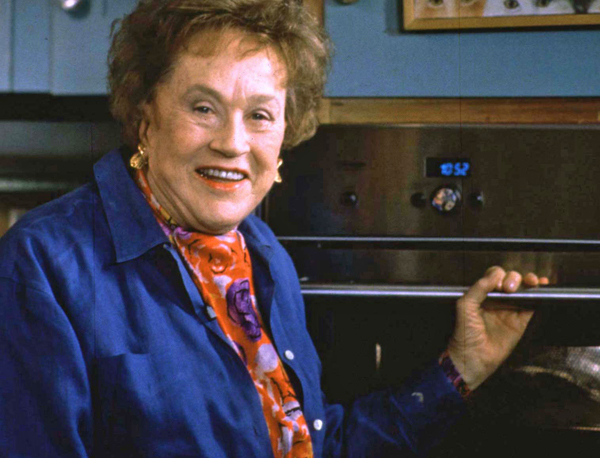I don’t need to watch Gordon Ramsay on “Hell’s Kitchen”. I lived it. When I first started cooking during my three years at university in Montreal, I worked for a martinet named Tony, a tall, balding Italian gentleman bitterly at odds with humanity and circumstance. Tony had a vocabulary that related almost exclusively to homosexual encounters—specifically my homosexual encounters—and how such activities were anathema to crafting good pizza. I was 18 years old, newly arrived from Johannesburg, and Tony had a filthy mouth even by my hometown’s high standards. On the odd occasion when I tried to remind him that I was indeed straight, Tony would double the verbal barrage, insisting that anyone who made Euro Deli’s signature thin crust pizza as badly as I did could only be indulging in late-night, meth-fuelled orgies in bars with names like Zippers.
My time at the Euro Deli coincided with the Rise of the Foodie, a Western trend that has turned food into a type of religion, and elevated the chef to the status of a god, or at least an A-list celebrity. Food is an emotional subject, inherently dramatic (will the recipe work, or will the soufflé end up a pancake?). Where once law firms provided the messy microcosm for all our specie’s foibles, it is now the kitchen—with its inviolable hierarchies, vicious politicking and long history of foul-mouthed Tonys—that has become reality television drama’s go-to locale.
Obsession with food isn’t a new phenomenon. There were master chefs long before Jamie Oliver lisped his way through a dozen television shows. The first recorded encomium to a meal can be found a mere 20-minute’s drive from Sandton, in the Cradle of Humankind. By immortalising kudu and springbok on cave walls, our ancestors were praising the value of a good braai. After all, buck are intrinsically nothing at which to marvel. They became wall painting-worthy when cooked over an open flame.

Photo: British celebrity chef Jamie Oliver (L) talks with Britain's Prime Minister Tony Blair in Downing Street in London, March 30, 2005. Blair promised more money for British school lunches on the day Oliver presented him with a plea signed by 271,000 people to stop feeding children junk. REUTERS/Russell Boyce
The Sumerians developed writing to list the ingredients of their dinner: sheep, grain, milk, cooking oil. Classic literature describes vast repasts; the Bible tells us of legendary feasts. The Romans developed the vomitorium; the Puritans praised the bounty of the New World and deep fried chicken in celebration of it. As long as we’ve written, we’ve written about food and the eating thereof.
But it was perhaps the American fascination with France in the late 50s that sparked Food Inc’s rise into mainstream culture. Ernest Hemingway, Saul Bellow and their peers haunted the Montparnasse in search of fine cuisine, and sent back their dispatches via tele-type. Bellow, after a decent Parisian meal, noted the flash of light refracting from rainwater in a sluice, and assembled the legendary opening line to “The Adventures of Augie March” in his head. “New Yorker” correspondent AJ Liebling, perhaps American literature’s greatest gourmand, ate and drank himself to death in France, but left perhaps the greatest paragraph ever written about food by way of an epitaph:
“The Proust madeleine phenomenon is now as firmly established in folklore as Newton's apple or Watt's steam kettle. The man ate a tea biscuit, the taste evoked memories, he wrote a book ... In the light of what Proust wrote with so mild a stimulus, it is the world's loss that he did not have a heartier appetite. On a dozen Gardiners Island oysters, a bowl of clam chowder, a peck of steamers, some bay scallops, three sautéed soft-shelled crabs, a few ears of fresh-picked corn, a thin swordfish steak of generous area, a pair of lobsters, and a Long Island duck, he might have written a masterpiece.”

Photo: The one who started it all: America's most famous home cook Julia Child is collaborating with her longtime friend Jacques Pepin, a chef, teacher, cookbook author and TV personality on a 22-episode PBS series, "Julia & Jacques: Cooking at Home."
But it was Julia Child, in 1961, who introduced Americans to cuisine, via “Mastering the Art of French Cooking”, her seminal work on, well, mastering French cooking. Child used more butter in one dish than most Americans had used in their lives, and she was proud of it. Like surfing and the hula-hoop, French cuisine became a craze, then a fad, then a surprisingly durable part of the American cultural landscape, bubbling under the surface of apple-pie-and-ice-cream eras like the 70s and early 80s. Trends came and never fully disappeared—sushi, Asian fusion, the George Forman Grill, and so on. The American culinary landscape was becoming remarkably catholic.
Meanwhile, on the other side of the pond, Britain was undergoing something of a renaissance. If you read your Graham Greene, you know that an overcooked steak, well-aged potatoes and a glass of pungent claret (by all means, pronounce the “t”) were the best one could expect from London in the decade-and-a-half after the War. Bad teeth and bad food—that was the lot of the Englishman. But restaurants like La Gavroche, ran by Michel Roux as if it were the inner circle of Dante’s Hades, were bringing French style food to the damaged English palate. No more toast and drippings—this was classic stuff, made with flair, and by the time Michel Roux Jr had completed his culinary peregrinations and come to work at his papa’s keep, La Gavroche had sparked a London-wide revolution.
Watch: Julia Child Memories: Bon Appétit! (A preview of PBS special)
type="application/x-shockwave-flash">






